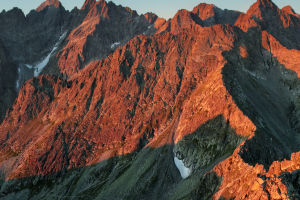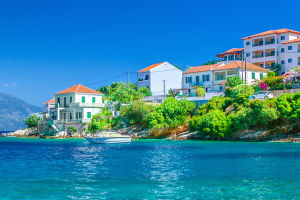The lights of the city are getting brighter and brighter, and the stars in the sky are getting farther and farther away from us. If we occasionally look up to see a star, it will surprise and delight us. In order to protect the scenery above us, organizations such as the International Dark Sky Association and UNESCO have been searching and protecting those precious star resources on a global scale. Check out these places below and you'll know where to go on your next trip to the stars.
1. Aoraki Mackenzie International Dark Sky Reserve, New Zealand
In 1988, American astronomer David Crawford and amateur astronomer Timothy Hunt established a non-profit organization, the International Dark Sky Society, dedicated to protecting the natural nighttime environment from damage. The Aoraki Mackenzie International Dark Sky Reserve in New Zealand was established in 2012 and joined the International Dark Sky Association. It is the first dark sky reserve in the southern hemisphere and one of only 16 dark sky reserves in the world. The reserve is located above the Mackenzie Alpine Basin on New Zealand's South Island, where the arid climate allows for a thin but stable atmosphere and excellent transparency.
In addition, there are only less than 500 permanent residents nearby, and everyone spontaneously protects this deep dark night, and there is almost no pollution caused by human activities. Such superior natural conditions make for an amazing stargazing experience in the reserve. Visitors flocked to the reserve's planetarium to look skyward through telescopes. Or you can follow in the footsteps of your guide and go to Lake Tekapo to watch the starry sky. If you are lucky, you can also see the very rare nebula wonders.
2. Namibland Nature Reserve, Namibia
In the yellow sand of the Namib Desert, there are few people except drought-tolerant plants. It is the purgatory of life, but also the heaven of the stars. Hidden in the ancient Namib Desert, the Namibland Nature Reserve is one of the "darkest places on earth" and the nearest human settlement is 96 kilometers away. The arid climate makes the atmosphere thin and clear, and the distance from humans makes nature more pure.
Although it is difficult to live in the reserve for a long time, starry sky lovers still try their best to cross the Namib Desert just to catch a glimpse of the stars. If you want to get as close to the starry sky and nature as possible, then you can choose a good place to set up your tent, and you can see the starry sky when you look up. If you are after high-quality accommodation, there are also many luxury resort hotels in the reserve for you to choose from, soaking in a private open-air bathtub, and the stars are all your own background.
3. Canary Islands, La Palma and Tenerife
Among the three "starlight reserves" recognized by UNESCO, the Canary Islands have a seat. The Canary Islands are located in the Atlantic Ocean in the northwest waters of Africa. The isolated geographical position allows people to clearly see the starry night sky no matter where they are in the archipelago. However, to find the best viewing angle, professional and amateur astronomers will recommend La Palma and Tenerife.
There are three astronomical observation areas set up by the Institute of Astrophysics of the Canary Islands on the two islands. They are all built on the top of the mountain. Tourists can borrow the professional equipment of the observation area to enjoy the dazzling beauty of the galaxy. The beautiful Starlight Reserve has attracted a lot of movies, such as "Fast and Furious 6" and "Wrath of the Gods" and other Hollywood blockbusters have been filmed here.


